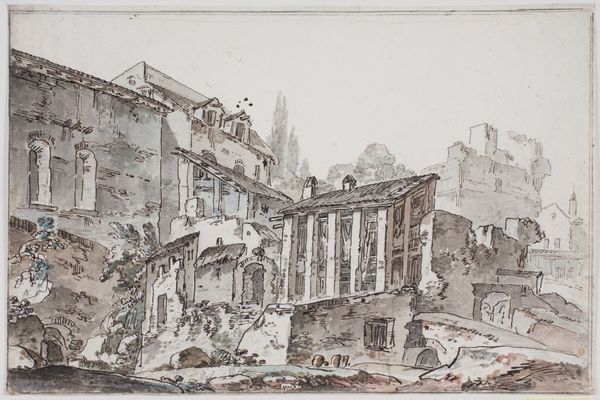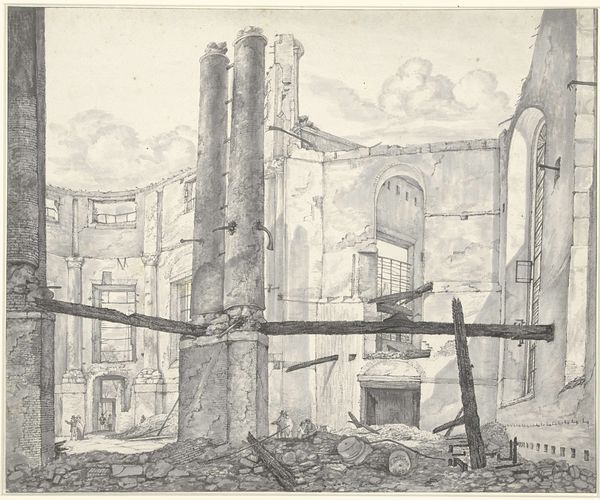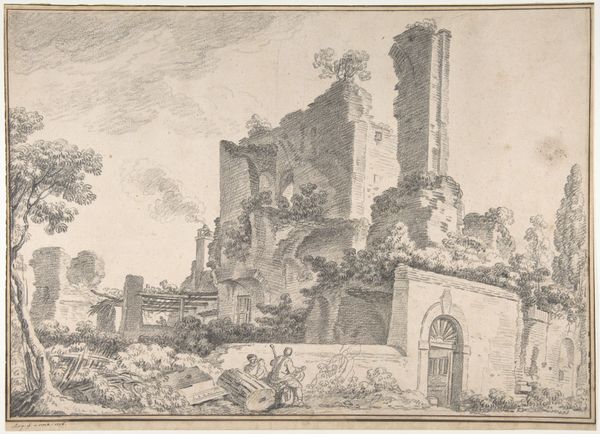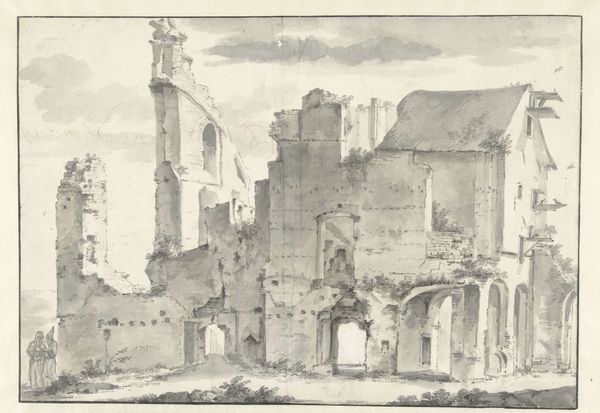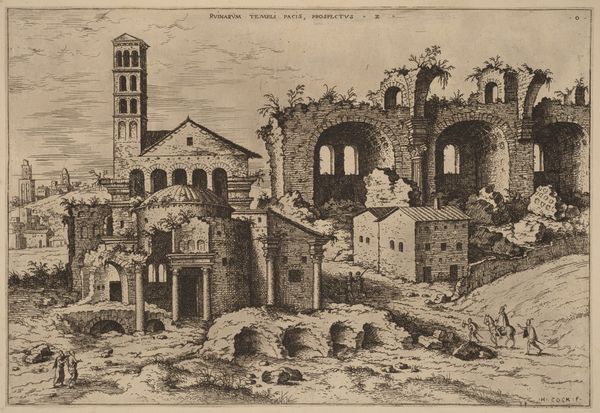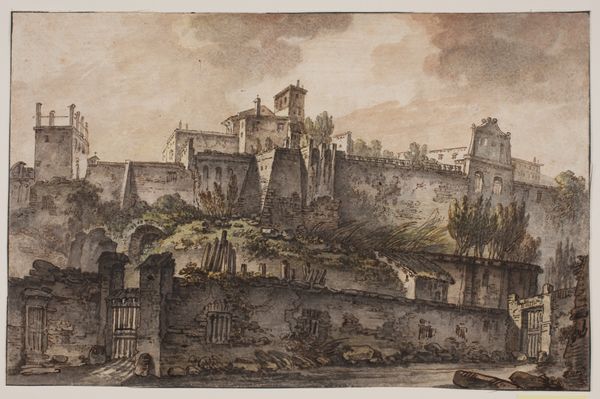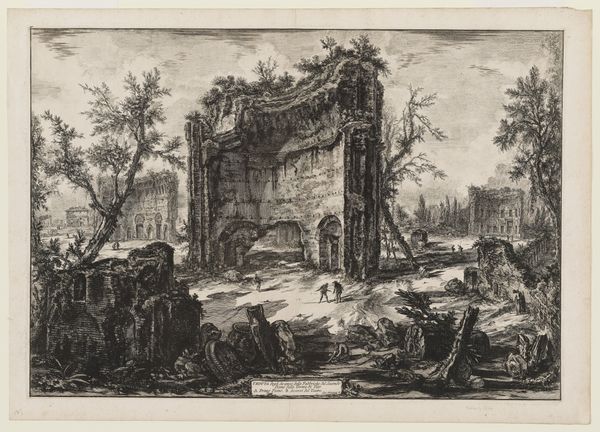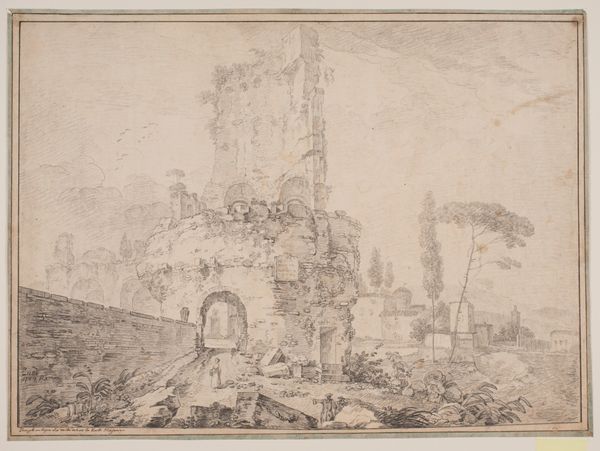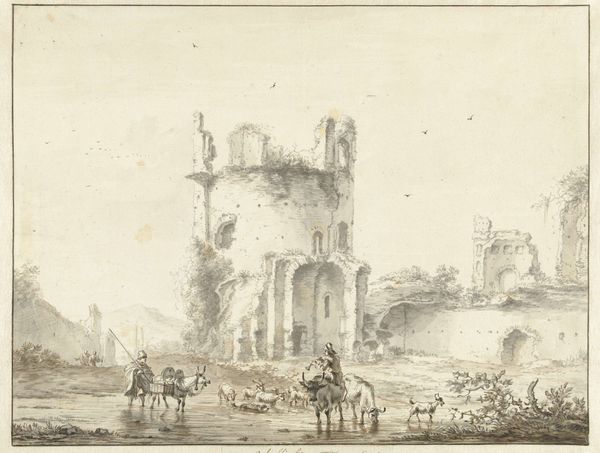
Dimensions: 282 mm (height) x 428 mm (width) (bladmaal)
Curator: There's a quiet melancholy in this work, don't you think? Editor: Absolutely, a somber charm. The ruins really evoke that mood. We’re looking at "Prospekt med ruiner," a drawing in watercolor by Jens Petersen Lund, likely made sometime between 1730 and 1793. It’s part of the collection here at the SMK, Statens Museum for Kunst. Curator: Ruins often symbolize the transience of earthly power, reminding us of empires and cultures reduced to fragments. Lund taps into that deep vein of human awareness. Look how nature starts to reclaim the structure: a universal sign of life’s cyclical pattern. Editor: Right, but also consider the materials used. Watercolor on paper-- fragile, ephemeral. That choice reinforces the theme of decay, a very deliberate layering of meaning through material. What about the pigment? Was it locally sourced? This muted palette really contributes to the desolate feel. Curator: Precisely, the colors contribute so much, like a subdued echo. And in Lund’s use of classical motifs, you see a reaching back to a golden age, tinged with an understanding of history's inevitable decline. A continuous fascination with Rome, and the weight of that historical image, permeates the composition. Editor: I wonder about the social context, too. Was Lund part of the Grand Tour circuit? Was he painting for a specific patron or a broader market hungry for images of the crumbling Roman empire? The making, distribution and viewing of such an image reflects economic systems of art, it speaks to supply and demand. Curator: It is striking how universal ruin imagery becomes, irrespective of immediate economic and social standing. It seems this artistic pursuit becomes something like a timeless visual meditation on cultural legacy and change. Editor: Yes, so many layers interweave – the materials themselves aging, mimicking the image; the decay represented. The work allows a tangible confrontation with time itself. Curator: Indeed, reflecting upon it, I’m more aware than before of how cultural narratives can reside within depictions of broken stones. Editor: And I am left pondering about the artist and audience: were they aware of how labor, extraction, trade and production factored in to this melancholy scene? Fascinating stuff!
Comments
No comments
Be the first to comment and join the conversation on the ultimate creative platform.

